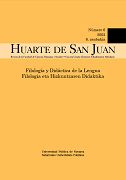David O. Russell's "Flirting with disaster". Survival of the family unit on the road
Keywords:
Road moviesAbstract
lnstead of the usual denial of the responsibilities of domesticity —marriage, motherhood and employment— David O. Russell's road comedy "Flirting with disaster" (1996) presents a family as road protagonist. The aim of this paper is to analyse the innovative appearance of the family unit in the road movie genre as presented in Flirting with Disaster, but specially to show the survival of the married couple and the happy family after the threat posed by the transformational road adventure. Despite its subversive depiction of controversial sex and gender issues through a successful comic perspective and its significant presentation of a companionate marriage and family as protagonists, Flirting with Disaster recovers Hollywood's classical closure, regarding both form and content. lts traditional, unjustified promotion of marriage and the family may disappoint the viewer who may have found disaster as a more realistic option, more in accordance with the traditional conventions of the road movie genre.
Downloads
References
ATKINSON, MICHAEL 1997. 'They've Got (Weird) Rhythm'. Movieline Magazine. March.
COHAN, STEVE and HARK, INA RAE, eds. 1997. The Road Movie Book. London and New York: Routledge.
EVANS, PETER and DELEYTO, CELESTINO 1995. Terms of Endearment: Hollywood Romantic Comedy ofthe 1980s and 1990s. Edinburgh University Press.
EYERMAN, RON and LÖFGREN, ORVAR 1995. 'Romancing the Road: Road Movies and Images of Mobility'. Theory, Culture and Society. vol1 2, n1, Feb: 53-79.
FISCHER, LUCY 1996. Cinematernity: Film, Motherhood, Genre. Princeton, New Jersey: Princeton University Press.
KEOUGH, PETER 1996. 'Flirting with Success'. Los Angeles Weekly. March 28th-April 4th.
KRUTNIK, FRANK 1990. 'The Faint Aroma of Performing Seals: The 'Nervous' Romance and the Comedy of the Sexes'. The Velvet Light Trap. n26 Fall. University of Texas Press. 57-62.
LADERMAN, DAVID 1996. 'What a Trip: the Road Film and American Culture'. Journal of Film and Video. Vol 48, n1-2, Spring-Summer, 41-57.
MALTIN, LEONARD 2000. 2001 Movie and Video Cuide. Harmondsworth: Penguin BOOKS.
NEALE, STEVE 1992. 'The Big Romance or Something Wild: Romantic Comedy Today'. Screen. Vol 33, n3, 284-299.
NOWELL-SMITH, GEOFFREY 1996. The Oxford History of World Cinema. The Definitive
History of Cinema Worlwide. Oxford U niversity Press.
PEARY, GERALD 1987. 'On the Road'. American Film. Jan/Feb, 65-67.
ROWE KARLYN, KATHERINE 1990. 'Roseanne: Unruly Woman as Domestic Goddess'. Screen. 31(4).
RUSSELL, DAVID O. 1997. The New York Screen Writer Monthly. May.
SEIDMAN, STEVEN 1991 . Romantic Longings. Love in America, 1830-1980. New York and London: Routledge.
TASKER, YVONNE 1998. Working Girls: Gender and Sexuality in Popular Cinema. London and New York: Routledge.
WHITE, MIMI 1989. 'Representing Romance: Reading/Writing/Fantasy and the 'Liberated' Heroine of Recent Hollywood Films'. Cinema lournal. Vol 28, n3, Spring, 41-56.
WILLIAMS, LINDA 1991 (1984). 'Something E lse Besides a Mother: Stella Dalias and the Maternal Melodrama'. In Marcia Landy, ed. Imitations of Lije. A Reader on Film and Television Melodrama. Detroit: Wayne State University Press.
WILLIAMS, MARK 1982. Road Movies. New York: Proteus.
WOLFF, JANET 1993. 'On the Road Again: Metaphors of Travel in Cultural Criticism'. Cultural Studies. Vol 7, n2, 224-239.
WOOD, ROBIN 1986. Hollywood from Vietnam to Reagan. New York: Columbia University Press.
WRIGHT, VIRGINIA 1993. Creating the Couple. Love, Marriage and Hollywood Performance. Princeton University Press.
Downloads
Published
How to Cite
Issue
Section
License
All articles are published under a Creative Commons (BY-NC-ND 4.0) license. Each article will be assigned a DOI.
Authors retain copyright of their work and grant the journal the right to the first publication. Authors can sign additional agreements to non-exclusive distribution of the published version of the article (for example, in an institutional repository) as long as appropriate attribution to the original publication is provided. Articles can be uploaded to institutional repositories immediately after publication.
Electronic distribution of the articles (for example, academic social networks or personal webpages) is allowed and encouraged.
The journal reserves the right to publicise the work in social networks and other electronic means.







